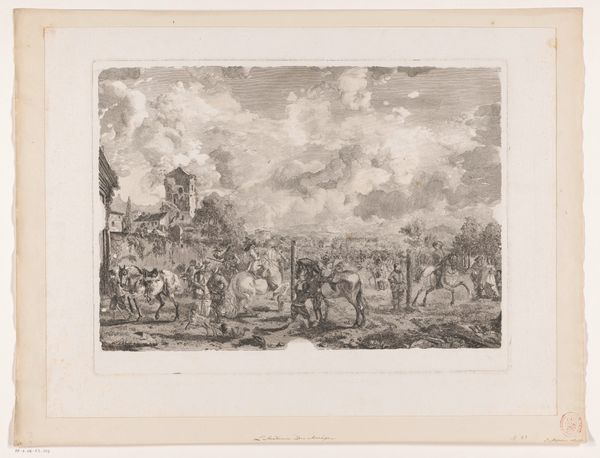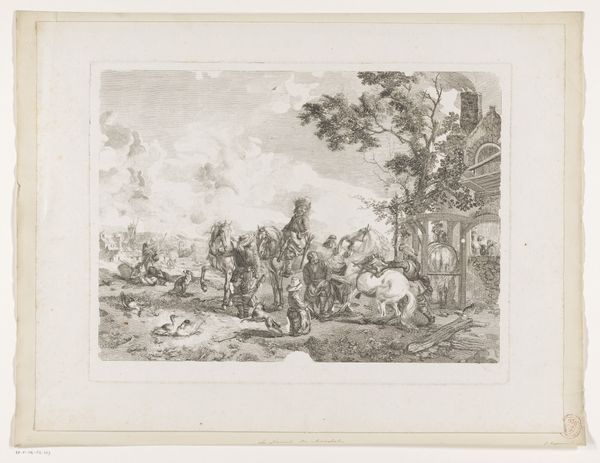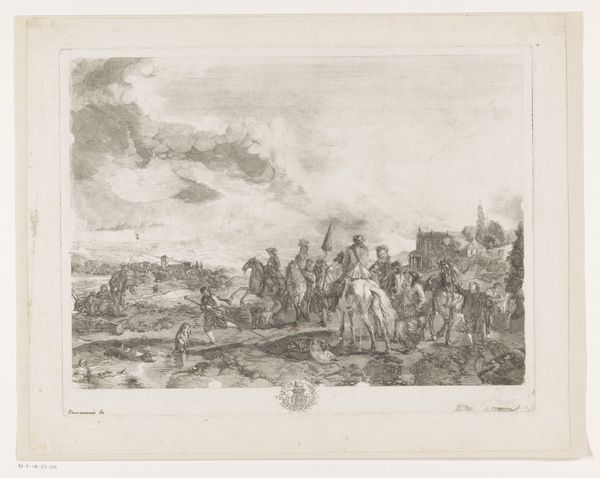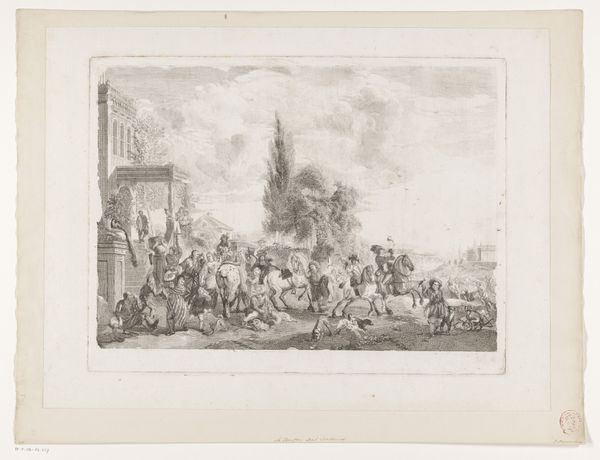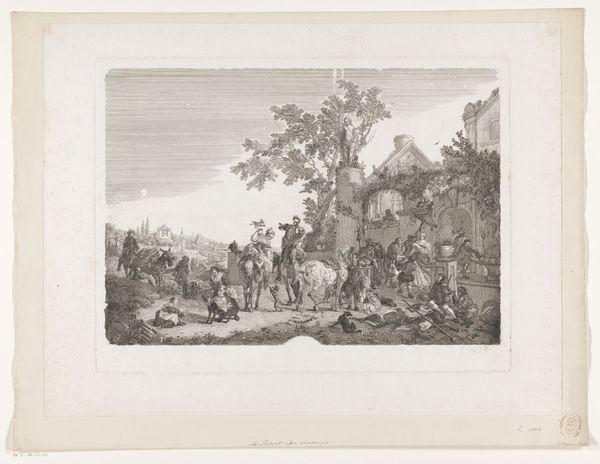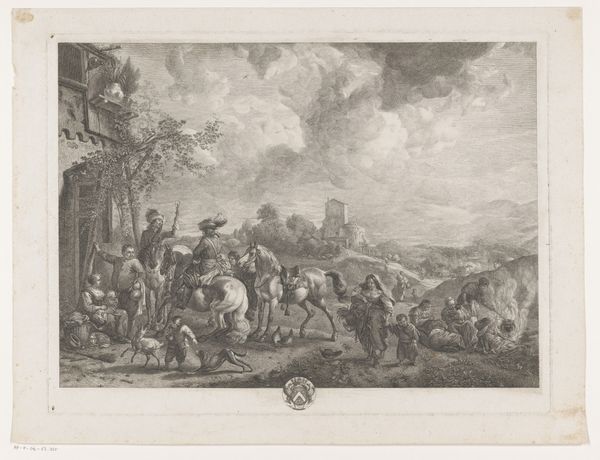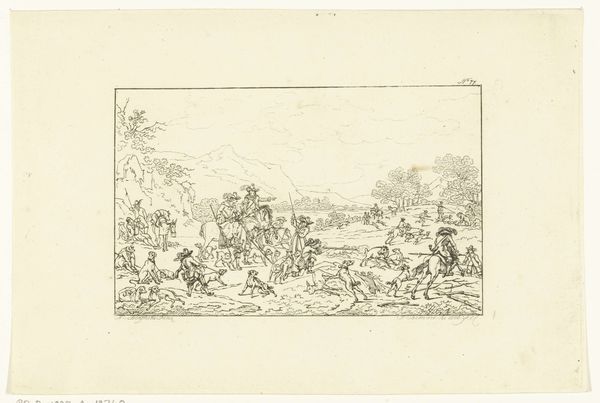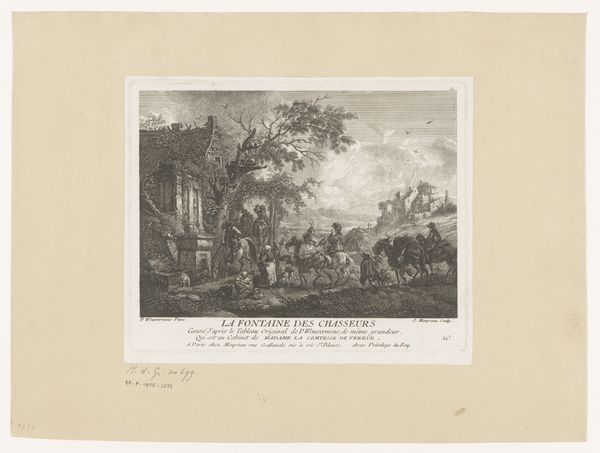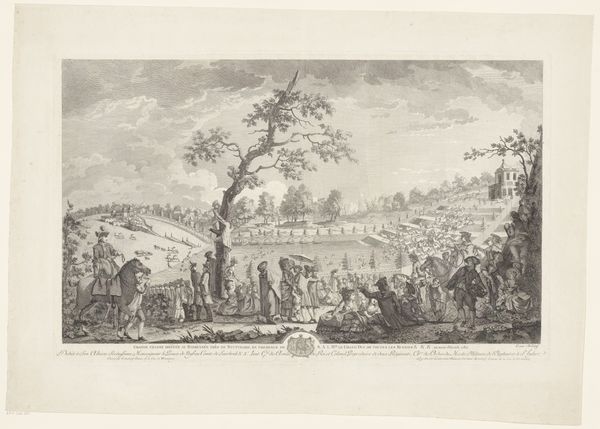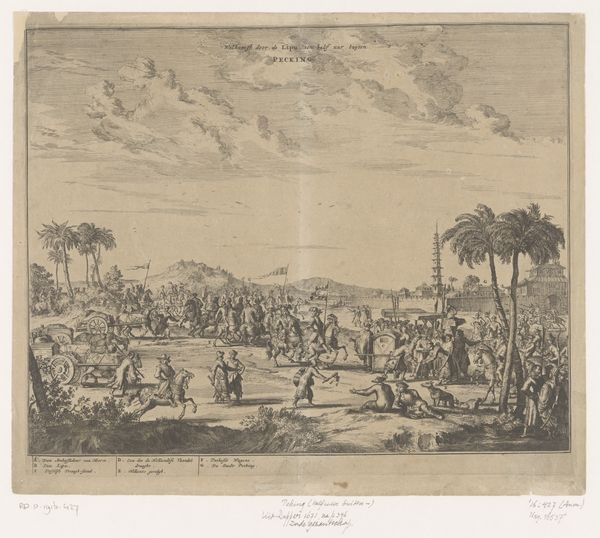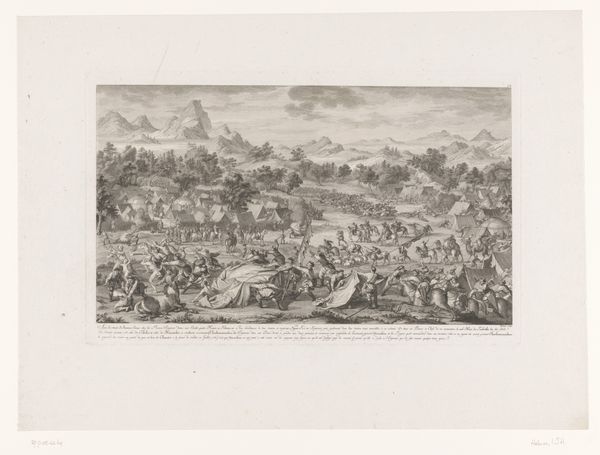
drawing, print, engraving
#
drawing
#
baroque
#
ink painting
# print
#
pencil sketch
#
landscape
#
figuration
#
line
#
watercolour illustration
#
genre-painting
#
engraving
#
realism
Dimensions: height 364 mm, width 478 mm
Copyright: Rijks Museum: Open Domain
Editor: This is "Travelers Before an Inn," a drawing, engraving and print by Jean Moyreau, dating from around 1733 to 1762. It’s currently held at the Rijksmuseum. It seems almost like a snapshot of everyday life, but the lines are so meticulously crafted. What do you see when you look at it? Curator: What strikes me first is the balanced tension between line and void. The figures are defined by intricate lines, primarily using engraving, while the landscape employs the drawing and print medium to add depth through variation in lightness and darkness. This dichotomy creates a captivating visual rhythm, drawing the eye across the plane. Note how the foreground is filled with carefully etched figures, offset against the softer, airier qualities as it progresses into the distance, where a line fades almost to vanishing point. Editor: That’s a wonderful point. The foreground really does pull you in, almost like actors on a stage. Does this division serve more than just a compositional purpose? Curator: Consider the textural diversity achieved through line variation. Moyreau’s skilled use of hatching and cross-hatching constructs form and modulates light, rendering the fabric of garments, the musculature of the horses, and even the density of the foliage. Ask yourself how the strategic placement of the darker, more densely worked areas contrast with the more loosely sketched regions affect your understanding? Editor: So it's the tension and harmony within the print that matters more than an external narrative? Curator: Precisely. Moyreau, through a mastery of line and composition, elevates a common scene to a plane of enduring aesthetic value. It’s not just a landscape. Instead, it presents us a study in contrasts, an investigation of the optical richness inherent to a singular two-dimensional medium. Editor: I’m beginning to see it as less about the scene itself and more about how Moyreau chose to represent it with such remarkable skill. Thanks for shedding light on it.
Comments
No comments
Be the first to comment and join the conversation on the ultimate creative platform.
